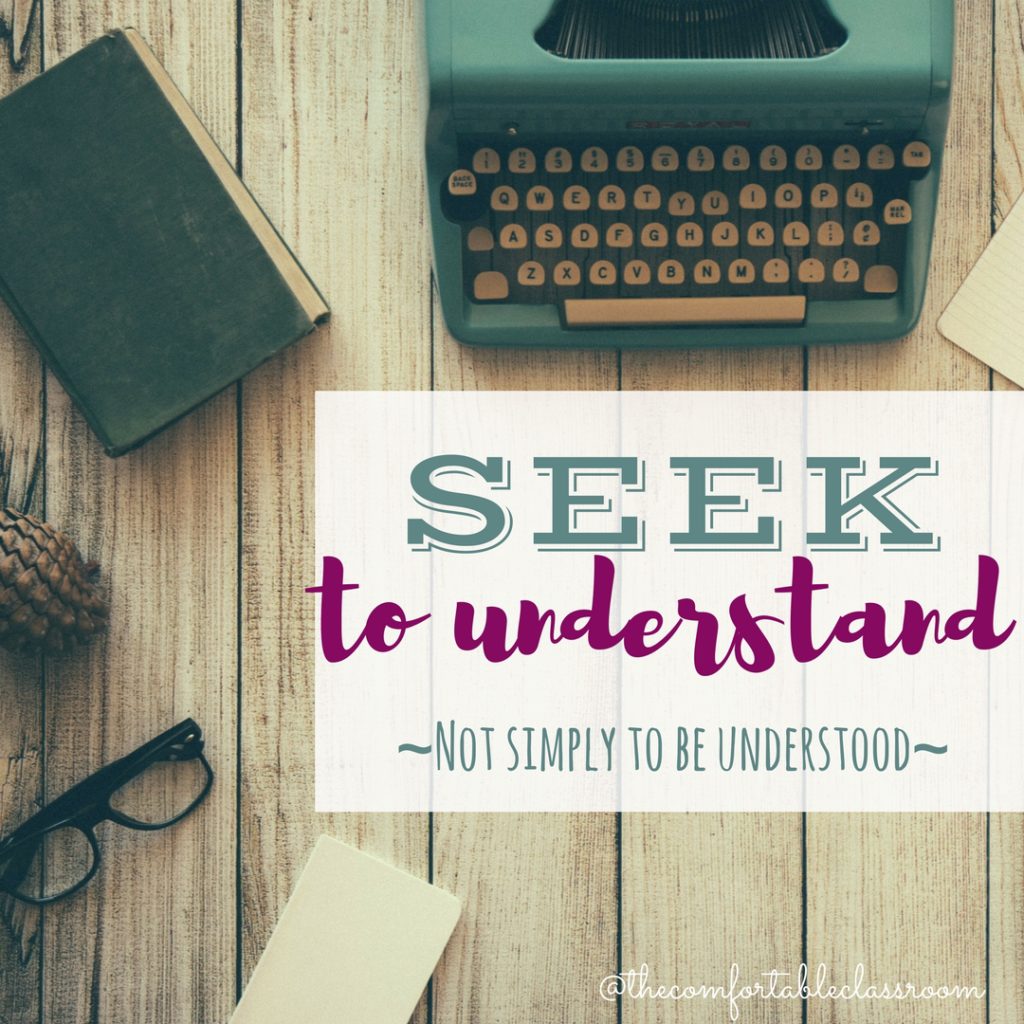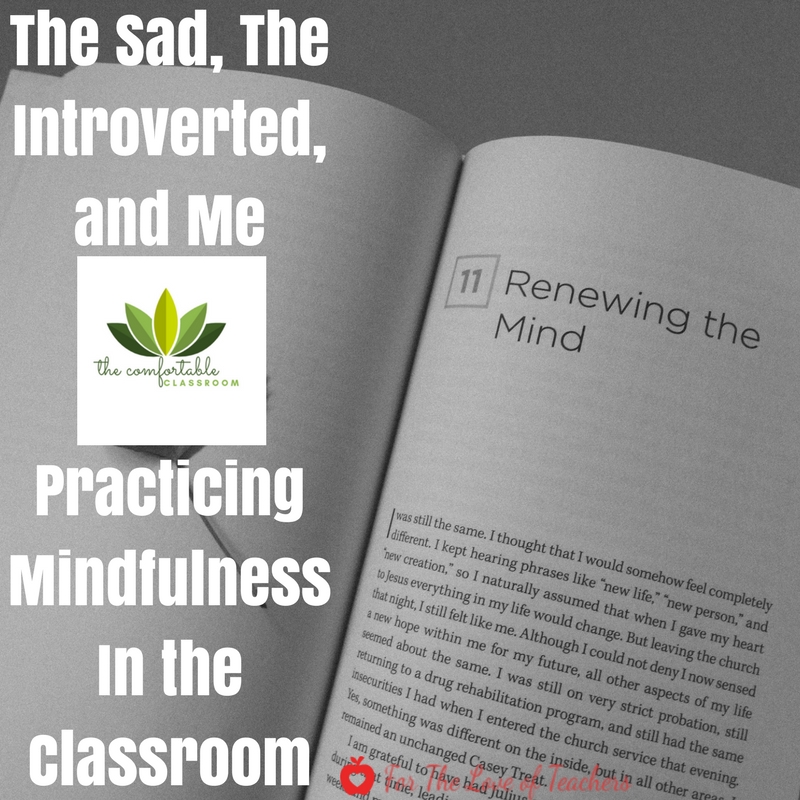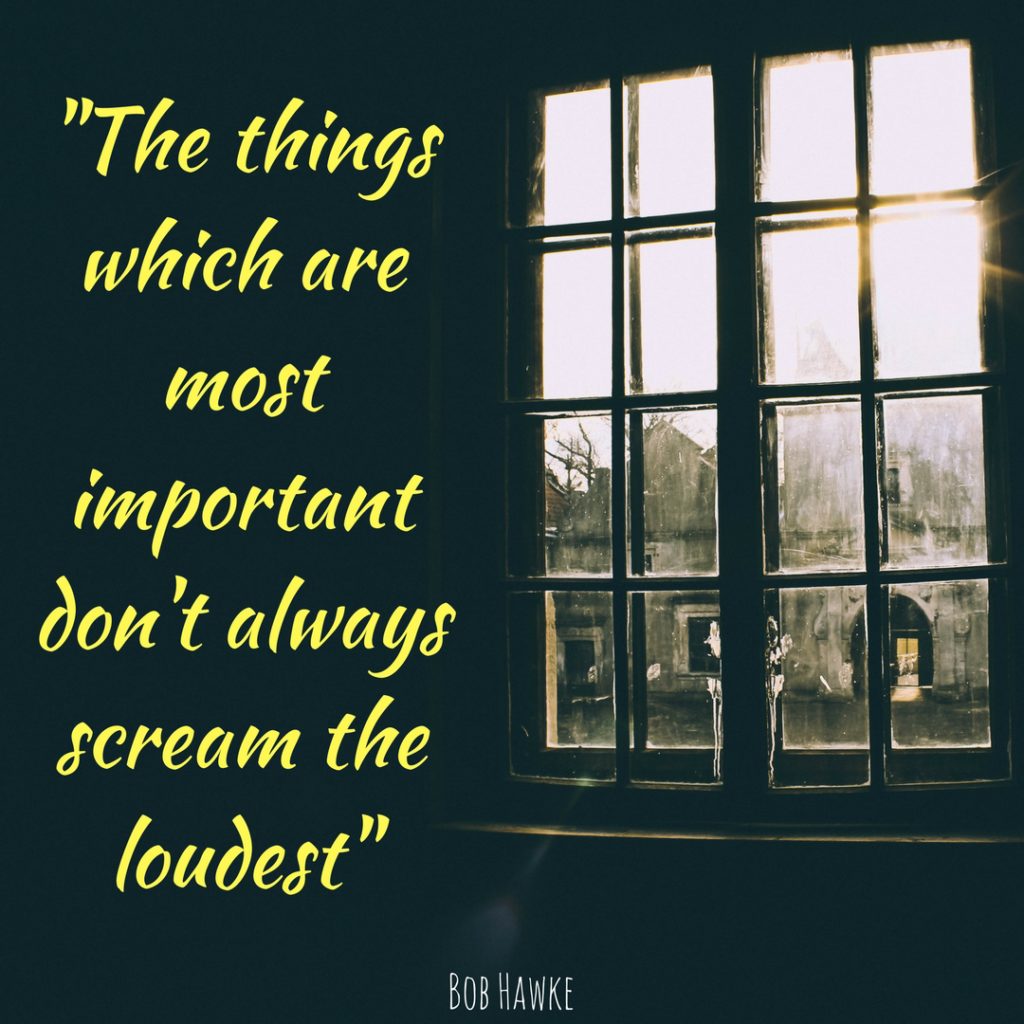Mindfulness awareness and its importance for one’s well being, both personally and professionally, has been widely recognized. Educators are realizing the value of practicing mindfulness in the classroom daily. Mindfulness involves awareness in both sensing and observing, being fully present in the now, and helps us with the regulation of emotion, attention, thought and behavior. It cultivates an inner sense of calm and clarity, integrating a way of being connected with others in a more empathetic, compassionate way (Jennings, 2015). All of this you could imagine is critical for students’ social, emotional and academic development. To show how to intentionally and purposefully integrate mindfulness practices into the classroom is an insightful post brought to you by The Comfortable Classroom.
The Sad, The Introverted, And Me
Practicing Mindfulness in the Classroom
Recently I had the privilege of interviewing potential candidates to a local college’s education department. I loved that they inherently knew that their job was one that called for much more than simply content knowledge and skill. Answers included:
“I want to teach my students to be good people.”
“I want to know my students can think critically for themselves and not just take things at face value.”
“I want to know I’ve sparked some sort of passion or excitement in their life, that they know they have hope and something to look forward to.”
“I want to make their world better.”
Fourteen years into the profession, I thought my own answers to their questions. I believe my role as a mother with school-age children has greatly impacted my philosophy. Personally, I want to impact each and every student in my classroom. I want to go to sleep at night knowing that every student—the loud and the quiet, the struggling and the advanced, the confident and the doubtful, the serious and the goofballs, the readers and the non-readers—felt comfortable in my classroom. I want them to know that I value them as people, not just test scores or GPAs. I want them to know they matter to me. I want them to know they are seen.

One of my goals is to get mindfulness into the hearts of other educators. I’m constantly educating myself about the concept. I know that to truly understand any other human being, I must step outside of myself and be an objective observer of my own interactions. I am so guilty of being caught up in my own “to do” list that I half-smile, half-listen, walk-and-talk, grade-and-nod, email-and-give-directions-from-my-desk, etc etc. So a few months ago, I set out to truly be mindful of each interaction with each student. I wanted to truly listen to what they were saying, writing, and thinking in my classroom. It was in my awareness each morning as I started my school day, and I tried to make eye contact with each student every time I spoke to them. I also intentionally took a deep breath once our interaction started so that it cued my body and brain to pay attention. I was more intentional with my body language and my words. My goal was that they could tangibly feel that they had my full attention.
This went well on most days. It meant that instead of checking my email, I greeted students at the door. Instead of sitting at my desk grading last class’s exit tickets during silent reading, I would model reading too, and then engage with them during walk-and-talk time. The stress of things left undone was always lurking, but I learned to tolerate that unsent email or unchecked text message. And as this went along, I started to realize that something was missing. I was doing a great job of listening to their words, interpreting their actions, and reading their writing. But I knew in my classroom there were still things left unsaid. There were still feelings left bottled up. There was still potential left untapped at the end of the day.
Listening to what was, wasn’t enough. I needed to listen to the silence. I needed to feel the unspoken, to feel the energy that flowed among us. Now, silence is uncomfortable in a classroom. People mistake it as wasted time or a sign that no one knows the answer. But trauma-informed research shows us that many students in our population need silence to think, process, formulate responses, and plan their reactions. Students need “thinking space” to feel safe and included in their classroom, and in the academic conversation. And if a teacher listens for it intentionally, that silence can speak volumes for the introverted, the hurt, the angry, or the distracted. Time is precious, and silence is not a waste.
In this midst of this listening period, I was reading a book titled The One Thing by Gary W. Keller and Jay Papasan. I came across this quote, and I literally started crying. Even with all my intentionality, I was so guilty of letting my attention being dragged away from the quiet student with a soft question to the loud obnoxious one throwing erasers across the room. I might have been the only person she attempted to speak to that day.
I was guilty of spending my conferencing time struggling one-on-one with the talkative, needy student who is three steps behind on her paper. Instead, I should have been encouraging the young man in the corner who never likes anything, yet appears interested and motivated on this project. I might have motivated him to challenge himself, offered ideas in a deeper direction, or sparked a lifelong passion.
I let my downtime be monopolized by the gregarious, friendly students who approached my desk to talk about their weekends, their boyfriends, their math homework. I was making relationships with the ones who were easy to access, not the shy student who would rather be swallowed up by a hole than approach my desk voluntarily. I might be the only person in their day who asked them to contribute, to open up, or to engage.
Even in my own family, my quiet, moody 10-year old perfectionist daughter gets overshadowed by my rambunctious, loud tornado of a 6-year-old boy. She needs me to listen to her thoughts and feelings just as much as I need him to stop jumping on my couch.
So I sit here today, seeing a lot of things that I can get better at. Thankfully I know that admitting you have a problem is the first step in solving that problem. My mantra? “I direct my attention and intention.” If you are like me and you’d like to do justice to make your classroom a place where ALL students know you value them, see them, hear them, and love them, this is my list of practical, tangible steps:
-
Make a chart rotation schedule of which students you will connect with that day. This has NOTHING to do with academics. It is solely to remind you to make eye contact with them, say their name out loud, ask them to pass out supplies or pick up papers, give them an honest compliment, or ask them about a personal interest. 5 names a day. No one else has to know this is a thing… PLEASE do not announce to the class who your “special” kiddos of the day are! That will mortify the shy, the introverts, and honestly anyone over the age of 7. Keep it to yourself, but be diligent. In two weeks, you should intentionally connect with each student in your class. Shuffle, and begin again. (CLICK HERE for my FREE downloadable rotation form)
-
Wait time. Wait time. Wait time. Don’t allow blurting in your class. Require students to raise their hands to answer questions, and use some random method like names on notecards or Popsicle sticks. I’ve even seen this awesome teacher from the Teacher Channel use a deck of cards. These three elements blended together will increase the silent think time, encourage all students to engage with the content individually, and pay attention. Want to up the stakes? Wait time 2 is AFTER an answer has been given. Don’t immediately acknowledge the answer as wrong or right. Even your body language can be neutral. The students know that my typical answer is, “okay…” I say it in a tone that is neither condemning nor approving. I acknowledge the answer in a tone that invites further discussion. Then ask… “does anyone else have something to add? Another way to explain that? Agree? Disagree?” Whoever answered the question might be really uncomfortable at first because they want to know they are right. But wait time 2 opens the time for more silence, room for more voices to add to the conversations, and creates a climate that value all learners.
-
Structure five minutes of mindfulness meditation into your classroom. Teach your students different ways to breathe. Play quiet instrumental music on your phone, or use an app like Headspace. Use mantras or mudras to give the mind/body a method of focus. 5 minutes a day, either at the start to begin the class, as a brain break in the middle to re-energize, or at the end to collect their thoughts before they move on to another class. Check out this list from com on their top 10 mindfulness apps for the classroom!
As teachers, our job is more than content. If you’re reading this post, you already know that in your heart. I hope you find these strategies and musings helpful in your own classroom. Even the quiet questioner, the unusually motivated go-getter, the shy sweet student needs your attention. They need to feel they are valued and heard in your classroom. Your classroom can be one that is comfortable for all learners if you are intentional with directing your attention where you want it to go.
How do you practice mindfulness both personally and professionally?
 About The Comfortable Classroom: Fourteen years in public education and consulting. I am a facilitator who wants learning to be fun and engaging, all while making their little brains hurt from thinking so much. My classes are discussion and project based. I crave routine yet love changing things up to keep it interesting. I truly believe that mindfulness is the answer to so many questions we have in our classrooms and our lives.
About The Comfortable Classroom: Fourteen years in public education and consulting. I am a facilitator who wants learning to be fun and engaging, all while making their little brains hurt from thinking so much. My classes are discussion and project based. I crave routine yet love changing things up to keep it interesting. I truly believe that mindfulness is the answer to so many questions we have in our classrooms and our lives.
Follow The Comfortable Classroom’s TpT Shop and on Instagram.
Let’s talk more about mindfulness and its benefits to ourselves and our students. Meet me in the Forums to ask questions, share ideas and products.
Recommended Reads


Christine Weis is a passionate educator, classroom management coach, wife, and mom of two busy boys. She enjoys teaching, writing, and creating resources for teachers.






Great post about mindfulness and teaching. I shared it. Unfortunately, this font is fun but difficult to read.
Thank you for reading and sharing! Also, thanks for your feedback about the font. I changed it so it’s easier to read. 🙂
Christine at For The Love of Teachers
This is such a touching post. I am printing it out for keeps. Thanks for sharing your thoughts.
Awww…thanks! I’m glad you find it useful! Thanks for reading!
Christine at For The Love of Teachers
I am sure your students will appreciate you. A thoughtful teacher always has a positive impact on the students and you are having the same.
– http://www.allshethings.com
I hope so! Teachers try so hard to be thoughtful and mindful of each and every student. Thanks for reading!
Christine at For The Love of Teachers
I loved the The Thing, so usefulness the classroom. It’s hard getting students to be mindful even as an EL school working on it everyday–it takes lots of work.
It sure does take a lot of work! 🙂 Thanks for reading!
Christine at For The Love of Teachers
Great post! Mindfulness is such a important aspect of making a better you. I practice mindfulness by trying to remind myself that the world doesn’t revolve around me. Keep up the great work!
I agree! I hope to practice mindfulness more, both personally and professionally. Thanks for reading!
Christine at For The Love of Teachers
I know your students will remember you and appreciate your mindfulness and thoughtfulness about each of them specifically later on down the road! You’re doing a great thing for your students
Thank you! I hope so! Teachers work so hard and wear so many hats. Mindful practices help both teachers and students. A win-win! Thanks for reading!
Christine at For The Love of Teachers
Such an interesting read! I’m happy that mindfulness is becoming an important part of education
Me too! Thanks for reading!
Christine at For The Love of Teachers
I loved this post. The world needs more teachers who are aware of all of their students and their different needs.. 🙂
I agree! I hope to spread this awareness of mindful practices to teachers. Thanks for reading!
Christine at For The Love of Teachers
I love the tip for structuring five minutes of mindfulness and meditation! That’s something I’ve been working to cultivate in my own personal life and it’s amazing what a difference it can make not only in the moment but your overall day. I think all schools could benefit from planned meditations! Good idea!
Me too! I’m hoping to practice mindfulness more on a personal level and raising awareness to teachers. Thanks for reading!
Christine at For The Love of Teachers
This was such a great read. I am currently an education major and found this very helpful.
Thank you! I’m so glad it was helpful! Best wishes in your journey in education!
Christine at For The Love of Teachers
I”m not a teacher but as a parent I enjoyed this post immensely. I’ve been thinking a lot of mindfulness lately and recently started taking a meditation class and love it. They already had it at my son’s kindergarten in Montessori along with Yoga. They’re really on to something! I really liked your points that silence is not a waste and standing up to greet your students and really being physically and mentally present. And the concept of tolerating the stress of things left undone, because let’s face it…there’s always something more to do, more to achieve etc. and sometimes we need to leave that till tomorrow. Anyways, really enjoyed this. Thanks for writing!
Thank you Janna! I’m so glad that you enjoyed this post. It is true that we could all get caught up in our “to do” lists and forget to be mindful and “human” sometimes. We often have to remember to take the time to listen and to slow down. Being in the now is so important. Thanks for reading!
Christine at For The Love of Teachers